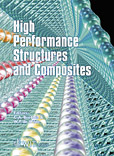Numerical Simulations Of An Inflatable/ Rigidizable Balloon For Electronic Collection
Price
Free (open access)
Transaction
Volume
59
Pages
10
Published
2002
Size
588 kb
Paper DOI
10.2495/HPS020491
Copyright
WIT Press
Author(s)
D. Darooka, M. Cioeta & M. Marchetti
Abstract
Inflatable space structures have been studied without a great success in the past 30 years. Now, due to the new computer-aided design techniques and the developments of new advanced materials, they are becoming one of the most promising technologies for the realisation of very large structures in space. In fact, inflatable structures present very low volume/weight ratio at launch that could significantly reduce the launch cost. In addition, their structural simplicity results in an improved reliability with respect to conventional structures [l]. In this paper the results of the numerical simulations made on an inflatable balloon of 5-meter diameter will be presented. The balloon is made of a multiplayer membrane of Kaptontm and copper and is rigidized by yielding the metallic layer through the inflation pressure. A key feature of this rigidization technique is the control of the deployment and the pressure inside the structure. The aim of the simulations carried out in this work was to assess the right material thickness and inflation pressure and determine the most suitable pressure profile. A pressure too low could not yield the material resulting in insufficient structural stiffness after the gas purging. On the other hand, a pressure too high could damage the very thin material. Both the inflation and the purging phases were analysed to assess the behaviour of the material. Simulations were performed with different values of pressure, pressure profiles, material thickness and layers configurations
Keywords





